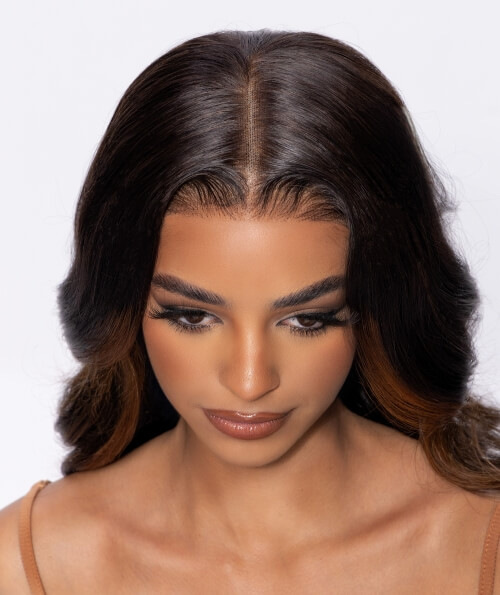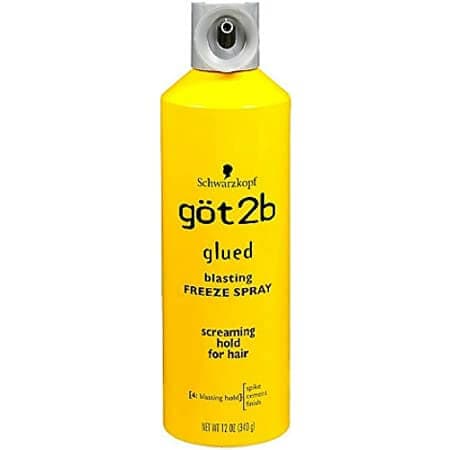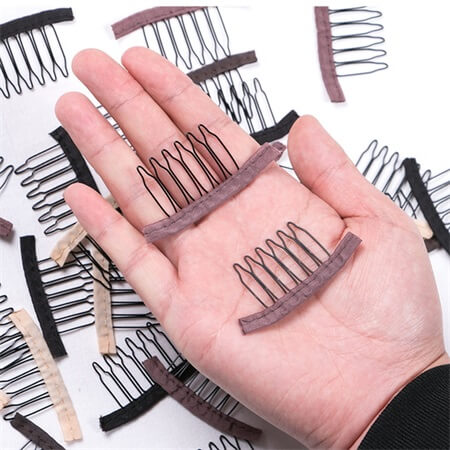6 Easy Ways to Protect Your Edges When Wearing Wigs
Although wigs can bring people beautiful looks, there is no doubt that they also may compromise the health of your natural hair. How can you achieve the look that you crave without sacrificing the health of your hair? Here we prepare these tricks about how to avoid losing edges when wearing a wig.
What are Edges?

Credit: unice.com
In fact, edges are those fine, baby hairs that grow along the perimeter of your hairline. They tend to be much shorter than the rest of your hair and can be styled with an edge brush otherwise known as “laying your edges”.
Keep in mind these edges are the most fragile hairs on the entire head. For example, it is very easy to pull them out when styling your hair or doing protective styles.
How to Protect Your Edges When Wearing a Lace Wig
1. Make Sure to Secure the Wig in the Right Position
It is key to secure the wig in the proper placement. After all, if you accidentally attach your lace front wig too far in front of your natural hairline, it can cause chafing that will irritate your scalp. If accidentally place it too far behind your hairline, it may cause you to mistakenly apply glue to your natural hair.
Thus, please pay more attention when you line up your lace front wig. During the installation process, carefully trim the extra lace so that it lines up with your hairline. Be cautious to cut neither the wig nor your own natural hair.
Besides, before installing the wig, it is best to cornrow or wrap your hair in a silk cap before installing, which will help the wig look more natural and can simultaneously secure the wig in place and protect your edges when wearing a lace front wig.
2. Use The Right Way To Secure The Wig
Wig Glue / Adhesive

While adhesives are not the safest of options, they definitely have the most natural-looking results. If possible, we recommend using adhesives for some special occasions only, such as weddings, graduations, holidays, and as sparingly as possible.
At the same time, please choose the right glue that can make your wigs look fresh for days or weeks, and can be effortlessly detached without pulling your natural hair. After all, if choosing the wrong glue, you may be stuck applying and need to reapply heavy, possibly irritating adhesives that can leave your scalp flaking or your edges in tatters.
So, which glue should you choose? We pull together 5 popularly used wig types of glue and let us see the pros and cons of them.
Got2B Glued: It is an excellent choice if you only plan to wear your wig during the day. If you’re looking forward to securing your lace front for a longer period of time, it won’t do the trick as it doesn’t hold up well against sweat or water.
Keisha: This kind of glue has a weak hold and can also be difficult to apply. If you love to exercise or you live in a rainy environment, it won't be an excellent option for you.
Bold Hold Extreme Creme: It’s also smooth, which makes it easy to lay down your edges. But it’s thin, you may need to apply several layers. Although it can last for several days if you don’t do any strenuous exercise, it will have the tendency to crust and flake, or even come off completely when confronted with moisture.
Bold Hold Active: It is one of the strongest wig glues on the market and is specifically designed for long-term wear that can withstand gyms, strong wind, and sleeping.
Ghost Bond: This is as durable as Bold Hold Active. It’s a great choice if you are often on the go or if you want to hit the gym regularly without worrying about your wig peeling up.
Metal Clips and Combs

To avoid painful snags and snatches, be sure to add some oil to the natural hair to soften tangles and the hold of clips.
When you plan to take off your wig, slowly release the clasp open, and test if there is any tugging or not. If tugging does occur, add additional oil again to detangle. Finally, gently slide the comb downwards from the nape and or temple.
Wig Grip
Always place the grip right behind the hairline where there is just enough space for a snug, comfortable fit for your wig, which can allow your edges to breathe without excessive tugging. Avoid using snagging hairpins to hold it into place.
3. Test if You are Allergic to Glue Before Applying
In order to avoid scalp allergically, drop a small amount of your desired adhesive on a sensitive area, such as on your inner arm, inside your wrist, or behind your ear. On the next morning, remove the Band-Aid and check your skin for irritation or redness.
4. Correctly Install Your Wig
In order to protect your edges when wearing wigs, make sure the lace wig is not too large or too small, which fits your head correctly. And do not put too much stress or tension on your head.
Here is a video on how to put on a lace front wig correctly for you as a reference.
5. Remove the wig Correctly
If we’ve been wearing lace wigs for an amount of time, we need to remove the lace wig some while and give the scalp and the hair a break. Take the proper tools, and remover to remove your wigs properly so that it doesn’t damage or break off the edges or the hair.
To remove a wig safely and lessen the risk of damage, gently apply a reputable adhesive remover such as Walker Tape C2. Then apply the adhesive with a Q-tip to gently loosen the glue and slowly peel the wig away from your scalp, working slowly and carefully from one side of your head to the other. In the end, follow up with a clarifying shampoo to remove any excess residue, and be sure to remove any glue residue from the wig itself.
There is a video about how to remove your wig. Watch it for more knowledge.
If you have sensitive skin, choose an oil-based one instead of an alcohol-based one.
If you want to remove glue from your lace frontal and hair without damaging your natural hair or hairline, see How To Remove Lace Wig Glue Safely And Quickly for some useful tips.
6. Opt for a Glueless Wig
Now, there is a wide range of adjustable straps and small combs to help people secure the lace frontal wig. You can also opt for a glueless wig to avoid glue and so on the hassle, such as V part wig, U-part wig, headband wig, and so on.
But you need to make a little more effort to skip the glue and make them as natural as a lace front wig.
If you are a wig lover and wear wigs often, try these tips to make sure that you can preserve your edges and make sure that the edge is intact.
